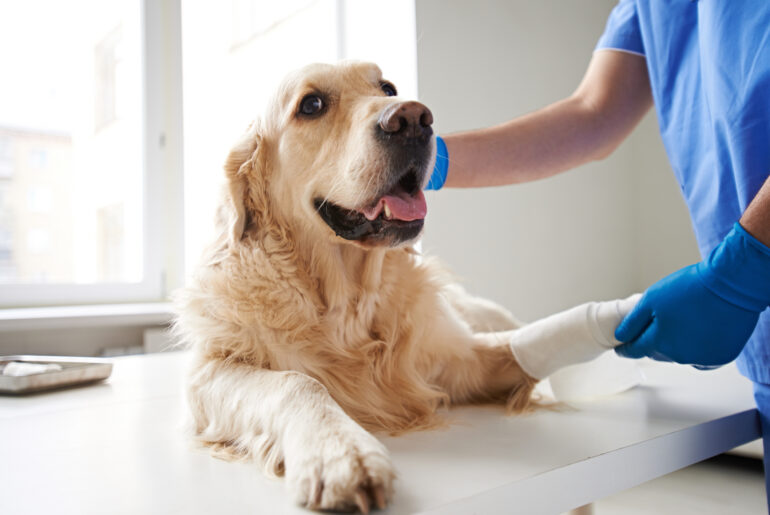Take your passion for animals and love of science to the next level by pursuing a degree as a veterinary technician. Vet technicians assist veterinarians in a number of tasks, such as performing clinical care and laboratory tests, preparing an animal for examination, completing surgical preparation, caring for overnight patients, and communicating with animal owners about a pet’s condition, exam results, and how to administer medications, among other tasks.
The vast majority of veterinary technicians work in private clinical practices under the supervision of a licensed veterinarian. Veterinary technicians can work in other settings, such as veterinary practices that treat large animals, emergency animal hospitals, research facilities, biomedical research labs, and zoos.
Education Requirements
To become a veterinary technician, you must complete a veterinary technician program accredited by the American Veterinary Medical Association (AVMA) which leads to a two-year associate degree.
Some veterinary technicians choose to pursue a veterinary specialty such as equine care, cardiology, oncology, or large animal surgery. These veterinary technicians must receive certification from one of 22 AVMA-recognized veterinary specialty organizations. Specialization certification demonstrates an advanced level of competency in a well-defined field of veterinary medicine and requires several years of experience as a veterinary technician, additional courses of study, clinical experience, and letters of recommendation. Candidates for specialization are usually also required to take and pass an exam relating to their specialty.
Testing Requirements
After graduating with an associate degree from an accredited college, most states require you to take the Veterinary Technician National Examination (VTNE), which is sponsored by the American Association of Veterinary State Boards (AAVSB).
Preparing for the Exam
The VTNE exam consists of 225 multiple-choice questions that assess your knowledge of animal care in the following subjects:
- Pharmacy and pharmacology (14%)
- Surgical preparation and assisting (16%)
- Dentistry (8%)
- Laboratory procedures (15%)
- Animal care and nursing (24%)
- Diagnostic imaging (8%)
- Anesthesia and analgesia (15%)
Of the 225 questions, only 200 are scored; the other twenty-five are pilot questions and do not count toward your score.
Peterson’s Veterinary Technician test prep features a comprehensive online course, three full-length practice tests, and flashcards to help you prepare for the VTNE exam.
After passing the VTNE, veterinary technicians apply to be licensed, registered, or certified, depending on the state in which they live.
Salary and Job Outlook
While a veterinary technician’s salary varies depending on the location and size of the practice, the U.S. Bureau of Labor Statistics reported that the median annual wage for veterinary technicians was $36,260 in May 2020. Employment opportunities for veterinary technicians are abundant, with the number of jobs projected to grow 16 percent from 2019 to 2029.
To find a list of schools that offer veterinary programs, visit Peterson’s college search.



